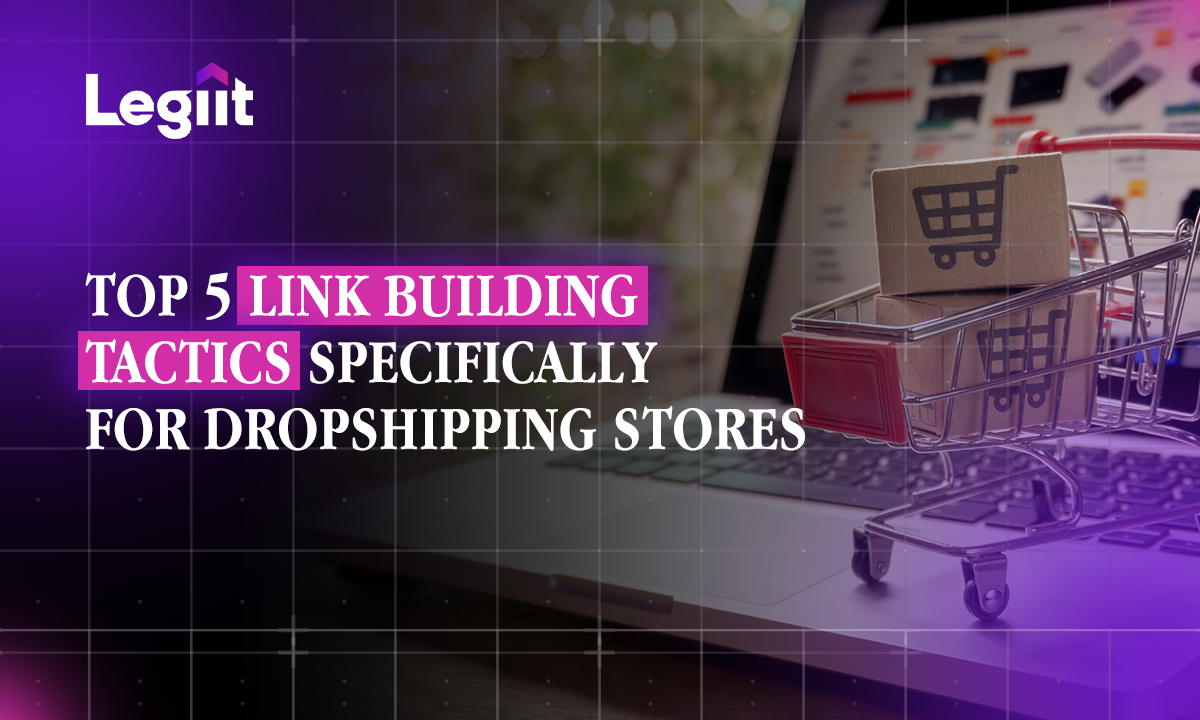75% of people don't go beyond the first search engine results page. In short: you cannot overlook SEO if you plan on building a robust plumbing business.
There is no doubt that SEO can be one of the most effective channels in bringing new customers to your business, but only when you get it right.
This article will take you through the fundamentals of optimizing your site. But why bother investing in SEO at all?
Why Is SEO Important For Plumbers?
Let’s start by looking at some figures:
- 68% of online experiences begin with a search engine
- 70% of online marketers find SEO better for generating sales than PPC
- 86% of people ignore paid banner adverts and will only click on organic search results
- About a third of consumers in the country search for businesses online every single day
While these and other SEO statistics are impressive, they only give a snapshot of the importance of SEO.
Look at the following benefits to get a fuller picture of the importance of SEO to your business.
Benefits of SEO:
1. Organic searches are the primary sources of web traffic
2. SEO builds trust and credibility
3. Good SEO almost always equates to a good user experience
4. Local SEO supports increased engagement, traffic, and conversions
5. SEO is relatively affordable and yields a significant return
6. It’s a long-term strategy
7. SEO is quantifiable
8. SEO will be around for a while
Can I Do SEO For My Plumbing Business Myself?

Indeed you can. Small and new businesses tend to be operating with stretched resources. So much so that it often makes little sense to pay a marketing agency.
Luckily, Do It Yourself SEO is an actual thing. With lots of research, practice, and consistency, you can work on your SEO and achieve excellent results.
But how?
Here are six things to do to optimize your site.
Step 1: Set Up a GMB and Optimization
You have probably looked up a particular service online, with a specific inquiry into businesses near you.
For example, ''roofing company near me'', ''pizza restaurants near me'' and so on. Your prospective customers will look for ‘’plumber near me’’.
Google gives two results for this: map pack results and regular organic results. Your competitors are likely ranking for both, and so should you.
However, to rank for the map pack, you must claim and optimize a free Google Business Profile. Here are the three steps involved.
1a. Setting up/Claiming a GMB
This is done through Google Maps. You can either add your business here or claim your business if it's already listed. Here is a step-by-step guide on how to set up or claim your business.
b. Optimizing it (Adding services, etc.)
Once you add or claim your business, you need to beef up the entry so that visitors get as much information about you as possible.
Begin by setting up your business category. In this case, ‘’plumber’’. You can opt to be more specific about your plumbing specialties, for example;
- Heating Contractor
- Drainage services
- Gas installation services
c. Specify your service area
You can list up to 20 locations on this tab. This section helps customers determine if you serve their area.
As per Google guidelines, ensure your stated locations do not go past two hours of driving from your physical location.
d. Add services and other information
Add all pertinent information that customers looking for you might need. This includes phone numbers, an email address, your physical location, opening and closing hours, and so on.
Also, add specifics on the services you offer.
1B: Directories Listings
We know of the traditional directories that list a business's phone number, name, and address. We have the same in SEO, known as NAP citations.
To get NAP citations for your business;
a. Look for citations with big data aggregators
Data aggregators take information about your plumbing business and feed it to multiple directories. The snowball effect means a listing with data aggregators can land your business hundreds of citations.
The largest data aggregators in the US are:
- Data Axle
- Foursquare
- Localeze
Other players are:
- Yelp
- Apple maps
- Yellow pages
- Bing Places
- TomTom
b. Get industry-specific listings
After data aggregators, getting city and industry-specific listings is the next goal. Look for websites linking to multiple competitors, but not to your site.
A simple way to do this is:
- Copy your site URL on Site Explorer
- Click on 'Link intersect'
- Enter the homepage URLs of 5-10 of your competitors
- Click on 'show link opportunities
- Review shown results for relevant directories
c. Load up on reviews
Reviews are undoubtedly crucial regarding how many people reach out to you, thanks to good reviews.
Besides this, reviews are also pivotal to your SEO. Once more place you can source for reviews is on your GMB profile.
To set this up:
- Create a review link on Google’s Business Profile Manager and send it to happy customers
- Call previous customers and request them to leave a review on your site
- Place a review link on your website
Positive or numerous Google reviews are not a magic pill that will instantly give you the top spot in ranking. Instead, they influence how Google evaluates your relevance for local searches. This improves search rankings and visibility and supports your overall SEO efforts.
Step 2: Keyword Research

While some prospective customers will click on map pack results, others will click on the regular organic results you get after initiating a Google search. Therefore, if you rely solely on your Google Business Profile, you risk losing out on clients opting for organic search results.
Optimize your website to rank for relevant keywords to be on the safe side. Then, you should build your brand over time and get good backlinks. This will help your homepage rank for common keywords customers use.
These can include combining common services with a location. For example;
- Plumber + Location
- Drain unblocking +Location
- Broken tap +Location
- Boiler Installation + Location
- Boiler Repair +Location
- Burst pipe repair +Location
- Toilet repair +Location
- Emergency plumber + location
If you need a hand with this, use the list you had listed on your Google Business Profile, then use a keyword research tool. Some of the best keyword research tools in the market today are:
- Semrush
- Google Search Console
- Movie
- Ahrefs
- Keyword Explorer
- Google Keyword Planner
- Jaaxy
- SECockpit
- Moz keyword explorer
- Keywords Everywhere
Step 3: Pages
Knowing which keywords to target is one part of the equation. The other part is creating pages to utilize the keywords adequately.
Let’s look at how you can actualize this on your Homepage, About Us, and Location pages.
Homepage
In a sense, your homepage 'absorbs' all the page rank and power from other pages on your business site.
In matters of SEO, this page is critical for your SEO efforts because it gives Google a hint regarding what your business is about. Google will use some of this information, like title, content, and description to create your website's entry in the SERPs when people search for your domain name.
About us page
Most sites, even those not eyeing SEO will have an About us page. It's just the thing to do. This page will showcase your E-A-T, Expertise, Authority, and Trustworthiness right off the bat.
Google does not use these as ranking factors, but ranking factors map out these qualities, supporting your optimization efforts.
You can demonstrate E-A-T on your about page by:
- Explaining how your plumbing business started
- Mentioning your certifications, accreditations, and years of expertise
- Stating your licensure and which insurance covers your plumbing business has
- Sampling testimonials and reviews from satisfied customers
These pages need to be done thoughtfully and professionally. One reason for this is backlinks. For example, plumbing websites with a good About Us page attract more backlinks. More backlinks improve your SEO ranking.
Location Page
A location page is also called a local landing page, and it’s an excellent way to target location-specific, long-tail keywords.
This is especially important if your plumbing business runs in different locations. Even better if you can dedicate a page to each location as this helps customers find your business in all the areas with a keyword and location search.
Whichever the case, these pages can help you rank for local SEO in locations beyond your main brick-and-mortar storefront.
One thing to pay attention to when creating these pages is page structure.
Page or site structure is important in SEO as it tells Google which pages of your site are most important. This means that you can use your site’s structure to determine which content from your site should rank the highest.
Step 4: On-Page SEO For Plumbers

On-page or on-site SEO is optimizing web pages to improve your site’s search engine rankings and increase organic traffic.
Besides having relevant, high-quality content, on-page SEO also includes optimization of headlines, images, and HTML tags (headers, meta, and titles).
Yoast and Rank Math can help you figure out your keywords and perform better in search engine rankings if you need a hand.
Meta Titles
Meta titles, also known as Meta tags, refer to the text displayed on browser tabs and search engine result pages. These inform on the topic of a webpage.
Search engines analyze these titles to navigate and rank the topic of your page, which then directly affects your SEO. Keep things simple here, for example:
- Boiler installation + Business name
Meta descriptions
A Meta description is an HTML element that provides a summary of a web page. Again, simplicity does it. Provide a few more details, and you're good to go.
For example:
- Are you looking to install a new boiler on your property? Atlanta Expert Plumbing will provide a free quote and do the installation in just three days.
Keep Meta descriptions at around 123 characters, or the statement might truncate.
Schema
For Google to deliver your business to people searching for your services, it must first understand what your content provides to users.
Towards this end, schema markup tells a search engine precisely what your content is trying to convey on your webpage. In short, schema helps you communicate better with Google.
Step 5: Off-Page SEO
Off-page or off-site SEO refers to SEO initiatives undertaken outside of your website to improve your rankings in search engine results pages (SERPS).
A top way to harness your off-page SEO is through link building. Link building is a process in which you get backlinks from other sites to your own. For this to happen, you must consistently have a stellar brand and high-value content.
There are three types of links:
Natural links: these are given organically for editorial reasons without any action on your part. For example, a bathtub store in your area linking to your site is a natural link.
Manually built links: you get these through link-building activities.
Asking influencers to share your link and customers to link to your site are good examples of this.
Self-created links: you create these by adding backlinks to directories, blog comments, online forums, press releases, and so on.
Backlinks sort of help you hitch a ride from other sites. For example, linking a busy faucet store to your plumbing business means some of the store's customers also get to see your content.
Generally, the more high-quality backlinks you have, the better your search traffic and rankings will be.
Here are some tips to help you with link building:
- Consistently publish link-worthy content. For example, plumbing DIY, data and trends, helpful research in your industry, fun-to-read yet informational pieces. As you are gettings started, it might help to have plumbing webmasters help you figure out the do’s and don’ts of high-value, link-worthy content. Rest assured, they offer good SEO rates for plumbers
- Reach out to authority sites to link to you. You can offer the same in return, but this depends on how good your site is
- Do newsworthy things. If local publications pick these up, the articles might include a link to your business site. Think sponsoring local events, CRS, partnerships, and so on
- Have an industry leader link their published articles to your site. Again, your site has to be above par
- Lookout for guest-posting and blogging opportunities
If you want to gain some traction quickly, see Legiit.com for professional freelance backlink service providers. This is a workable short-term remedy, and consistent, long-term SEO activities must back it.
Step 6: Technical SEO
Technical SEO improves the technical aspects of a website to increase its ranking in search engines. This makes a website faster, more understandable, and easier to crawl.
In this regard, we can say technical SEO increases your visibility.
Here is your technical SEO cheat sheet:
- Plan your website structure
- Ensure your site is crawlable so that Google can index your content properly
- Make sure you are using HTTPs
- Ensure your site is only accessible from one domain
- Work on page speed; bounce rate increases as page speed decreases
- Ensure your page is mobile phone optimized. Use the Google mobile-friendly tool for this
- Carry out a website audit and fix broken pages
- Clean your content to remove duplication
- Install an image compression plug-in
Final Thoughts
We fully contend that SEO is a cyclical process. As such, use this guide to learn the fundamentals of SEO as you keep yourself updated on new SEO guidelines and hacks.
Thirsty for more? Visit Legiit.com for all the digital marketing resources you need to grow your business.








 Download
Download